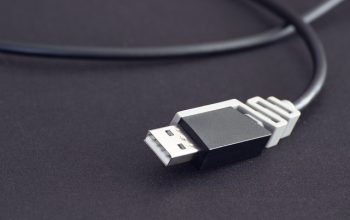Navigating the vehicle title transfer process can be a daunting task for many individuals, particularly those new to car ownership. This article demystifies the steps involved in transferring a car title, ensuring a seamless transition from seller to buyer. We’ll explore the DMV title transfer requirements that vary by state, offer guidance on managing associated fees and costs, and provide a comprehensive checklist for a smooth post-purchase title transfer. Whether you’re buying your first car or have experience with vehicle transactions, this guide will serve as an invaluable resource to streamline the process across different states. Understanding each aspect of the DMV title transfer protocol is key to avoiding delays and ensuring compliance with state regulations.
- Understanding the Vehicle Title Transfer Process
- State-Specific DMV Title Transfer Requirements
- Calculating and Managing Title Transfer Fees and Costs
- Essential Steps for Transferring a Car Title Post-Purchase
- Comprehensive DMV Title Transfer Checklist
- Navigating the Variations in Title Transfers Across Different States
Understanding the Vehicle Title Transfer Process

navigating the vehicle title transfer process can be a straightforward task when equipped with the right information and resources. When purchasing a vehicle, understanding the DMV title transfer requirements is crucial to ensure a seamless transition of ownership. Each state’s Department of Motor Vehicles (DMV) has its own set of regulations and forms that must be adhered to; these include completing the necessary application forms for title transfer, providing proof of ownership such as the previous title, submitting a bill of sale, and possibly undergoing a vehicle inspection. The process also involves submission of personal identification documents and payment of title transfer fees and costs, which can vary significantly from state to state. To expedite the transfer, it’s imperative to gather all required documentation beforehand. Once the buyer initiates the DMV title transfer process by submitting the completed application along with the necessary paperwork and fees, the DMV will handle the updating of records, issuing a new title in the buyer’s name, and notifying the previous owner that their liability for the vehicle has ended. Being aware of these steps and preparing for them in advance can save time and prevent potential penalties or delays that might arise from an incomplete transfer. Utilizing a DMV title transfer checklist is highly recommended to ensure all bases are covered, making the process less daunting and more efficient.
State-Specific DMV Title Transfer Requirements

Navigating the vehicle title transfer process requires careful attention to each state’s Department of Motor Vehicles (DMV) requirements, as they can differ significantly. Prospective owners must familiarize themselves with their specific state’s guidelines to ensure a seamless transition of ownership. The DMV title transfer requirements often include submitting the proper application form, providing proof of vehicle purchase and sale agreement, and presenting valid identification. Additional documents may be necessary, such as proof of insurance, odometer disclosure, and emissions inspection results. It’s crucial to obtain these documents early in the process to avoid delays.
Furthermore, title transfer fees and costs can vary across states, so it’s imperative to understand the financial aspect of the transaction. These fees may encompass registration fees, titling fees, and any applicable sales tax or use tax based on the state and local regulations. To initiate the transfer, the current vehicle owner must complete the necessary paperwork, which often includes signing over the title to the new owner. The transfer is not official until the state’s DMV processes and records the change, which can be facilitated by an online submission, in-person visit, or through the mail, depending on the state’s options. Utilizing a comprehensive DMV title transfer checklist can assist in managing all these requirements, ensuring that every step is accounted for, from gathering necessary documents to calculating and paying the correct title transfer fees and costs associated with how to transfer a car title after a car purchase.
Calculating and Managing Title Transfer Fees and Costs

Navigating the vehicle title transfer process involves understanding the associated fees and costs that come with transferring ownership at the DMV. Prospective vehicle owners must be aware of the specific DMV title transfer requirements for their state, as these dictate the necessary documentation and transactional fees. Typically, title transfer fees can include a state titling fee and a registration fee, and these charges vary from one jurisdiction to another. To manage these costs effectively, it’s advisable to research each fee prior to initiating the transfer process. This due diligence ensures that you are prepared for all financial obligations and can plan accordingly.
When considering how to transfer a car title after a purchase, it’s crucial to gather all required paperwork and familiarize yourself with the steps involved in your state. The DMV title transfer requirements may necessitate submitting the previous owner’s title, a completed application form for title transfer, proof of vehicle sale price (such as a bill of sale), evidence of insurance, and payment for the applicable fees. By preparing these documents and understanding the associated costs beforehand, you can streamline the process and expedite the transfer of your new vehicle’s title without unnecessary delays or additional expenses.
Essential Steps for Transferring a Car Title Post-Purchase

When you’ve completed the purchase of a vehicle, whether new or used, initiating the vehicle title transfer process is a critical next step to ensure legal ownership. This process begins with notifying the relevant Department of Motor Vehicles (DMV) about your car title transfer requirements. Each state has its own set of regulations governing the transfer of vehicle titles, and these must be adhered to strictly. The first step typically involves completing a title transfer application form provided by the DMV; this form may also require information such as the VIN (Vehicle Identification Number) for verification purposes.
Once the application is submitted, you must furnish the necessary documentation that proves the sale and your identity. This usually includes the previous title or bill of sale, a valid photo ID, and proof of insurance if applicable. Title transfer fees and costs vary by state, so it’s important to be aware of these beforehand. These fees are non-negotiable and must be paid for the DMV to process your application. To expedite the title transfer after car purchase, ensure all paperwork is filled out correctly, all required documents are included, and payment is ready. Efficient preparation minimizes processing time and helps you avoid potential penalties or delays. A comprehensive DMV title transfer checklist can serve as an invaluable guide throughout this process, providing clarity on each step to be taken and the documentation needed for a successful vehicle title transfer. This checklist can also assist in keeping track of deadlines and any follow-up actions required after the initial transfer is complete.
Comprehensive DMV Title Transfer Checklist

Navigating the vehicle title transfer process can be daunting for new vehicle owners. To streamline this transition, a comprehensive DMV title transfer checklist is indispensable. This checklist serves as a roadmap through the myriad of steps involved in transferring ownership, ensuring that all DMV title transfer requirements are met without delay. It begins with gathering essential documents such as the current vehicle title, proof of insurance, and a valid form of identification. These documents verify the identity of both the seller and buyer and are critical for completing the title transfer process. Next, one must acquaint themselves with the specific forms required by their state’s Department of Motor Vehicles, which can differ significantly from one jurisdiction to another. The checklist will also guide you through understanding and preparing for the title transfer fees and costs associated with the transaction, which are subject to variation depending on your location. By using this checklist, car owners can efficiently transfer a car title after purchase, minimizing the risk of incurring penalties or facing unnecessary delays. It’s a practical tool that simplifies what would otherwise be a complex and potentially confusing process. With each step clearly outlined, from document submission to payment processing, the DMV title transfer checklist is an essential resource for anyone looking to transfer their vehicle title with ease and confidence.
Navigating the Variations in Title Transfers Across Different States

When transferring a vehicle title, one must be adept at navigating the variations inherent in each state’s Department of Motor Vehicles (DMV) procedures. The vehicle title transfer process is not uniform across the nation; it is tailored to meet individual state regulations. Prospective owners must familiarize themselves with the DMV title transfer requirements specific to their region, as these can significantly differ from one state to another. For instance, documentation needed for a title transfer after car purchase may vary, ranging from a simple bill of sale to more detailed paperwork that includes proof of insurance and identification. Additionally, title transfer fees and costs are subject to change depending on the state, with some states imposing higher taxes or additional charges for used vehicles versus new ones. To expedite the process and mitigate potential penalties or delays, it is crucial to have a comprehensive understanding of the DMV’s requirements and associated fees in your jurisdiction. A well-organized DMV title transfer checklist can serve as an invaluable resource, ensuring all necessary steps are completed in order without oversight. This not only streamlines the transfer but also confirms that the transaction adheres to state laws, thus avoiding any complications post-transfer. Understanding the intricacies of each state’s requirements is key to a successful and efficient title transfer process.
Navigating the vehicle title transfer process can be daunting for new vehicle owners. However, by understanding the steps involved and adhering to each state’s specific DMV requirements, the process becomes more transparent and manageable. This article has outlined the key aspects of transferring a car title, including the necessary forms, associated fees, and post-purchase steps. Utilizing a comprehensive checklist can serve as an invaluable resource, ensuring a smooth transition of vehicle ownership. For first-time buyers or those unfamiliar with the DMV title transfer requirements, this guide provides clarity and confidence in completing the transaction efficiently. Remember to consider the variation in title transfer processes across different states and plan accordingly to avoid any potential penalties or delays. With these tools and knowledge, you can successfully navigate the vehicle title transfer process, ensuring a hassle-free transition each time.



